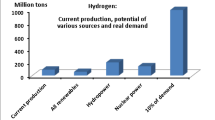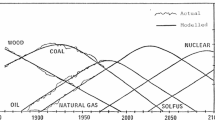By reducing the consumption of hydrocarbons for the production of thermal and electric energy, problems associated with global heating can be mitigated. Industrial, transport, and utility sectors currently account for about 70% of total consumption of fossil energy resources. In order to significantly reduce carbon emissions, it will be necessary to replace the energy of burning fossil fuels with nuclear and renewable energy sources. In addition, nuclear energy can act as a large stabilizing energy source for the production of hydrogen for use in industry, transport, and distributed energy engineering, as well as in the production of high-temperature heat for energy-intensive technological processes. In terms of financial return, the production of energy carriers (hydrogen, methanol, etc.) using atomic energy is equivalent to the production of energy carriers in the electric power industry. The Rosatom State Corporation has presented a program for the development of atomic-hydrogen energy engineering and already begun its implementation.
Similar content being viewed by others
References
N. N. Ponomarev-Stepnoy, S. V. Alekseev, V. V. Petrunin, et al., “Nuclear power engineering complex with high-temperature gas-cooled reactors for large-scale environmentally friendly production of hydrogen using water and natural gas,” Gaz. Prom., No. 11, 94–102 (2018).
Atomic-Hydrogen Energy and Technology, Iss. 1–8, Energoatomizdat, Moscow (1979–1988).
N. N. Ponomarev-Stepnoy, “Nuclear hydrogen economy,” Vest. Ross. Akad. Nauk, 91, Iss. 5, 484–498 (2021).
V. N. Grebennik, N. E. Kukharkin, and N. N. Ponomarev-Stepnoy, High-Temperature Gas-Cooled Reactors as an Innovative Direction of the Nuclear Energy Development, Energoatomizdat, Moscow (2008).
V. Yu. Dolgopolov, I. V. Lomov, and I. V. Shamanin, Introduction to Nuclear-Hydrogen Energy: Textbook, Tomsk Polytechn. Univ., Tomsk (2008).
V. V. Petrunin, N. G. Kodochigov, S. M. Dmitriev, et al., Nuclear Power Plants with High-Temperature Modular Gas-Cooled Reactors, N. N. Ponomarev-Stepnoy (ed.), N. Novgorod State Techn. Univ., Nizhny Novgorod (2018).
V. V. Petrunin, S. A. Fateev, and N. V. Sheshina, “NPEPs based on HTGCRs with the vapor-oxygen conversion of methane,” Byull. Rosenergoatoma, 24–29 (2021).
N. N. Ponomarev-Stepnoy and A. Ya. Stolyarevskii, “Atomic hydrogen energy: development trends,” Energia, Iss. 1, 3–9 (2004).
Author information
Authors and Affiliations
Corresponding author
Additional information
Translated from Atomnaya Énergiya, Vol. 133, No. 5–6, pp. 243–250, November–December, 2022.
Rights and permissions
Springer Nature or its licensor (e.g. a society or other partner) holds exclusive rights to this article under a publishing agreement with the author(s) or other rightsholder(s); author self-archiving of the accepted manuscript version of this article is solely governed by the terms of such publishing agreement and applicable law.
About this article
Cite this article
Fateev, S.A., Petrunin, V.V., Kodochigov, G.N. et al. Development of Atomic-Hydrogen Energy Technologies in the Rosatom State Corporation. At Energy 133, 251–258 (2023). https://doi.org/10.1007/s10512-023-01004-4
Published:
Issue Date:
DOI: https://doi.org/10.1007/s10512-023-01004-4




